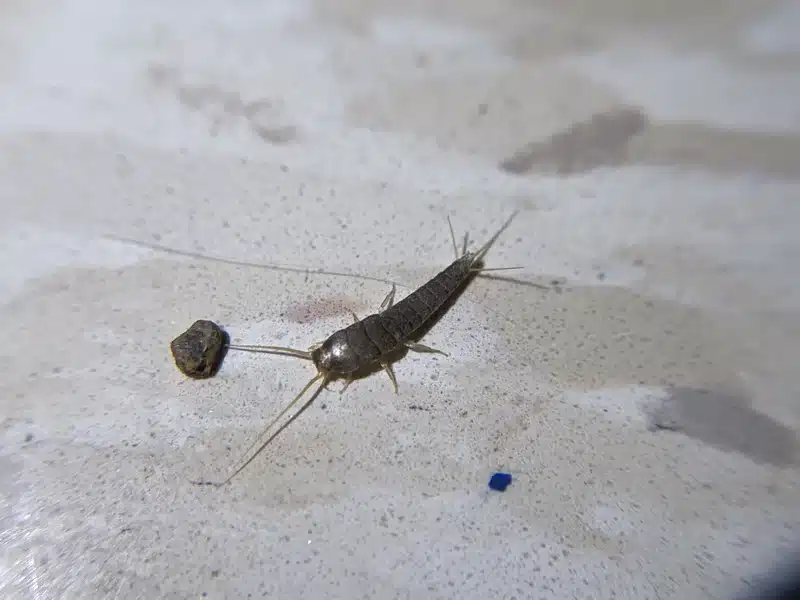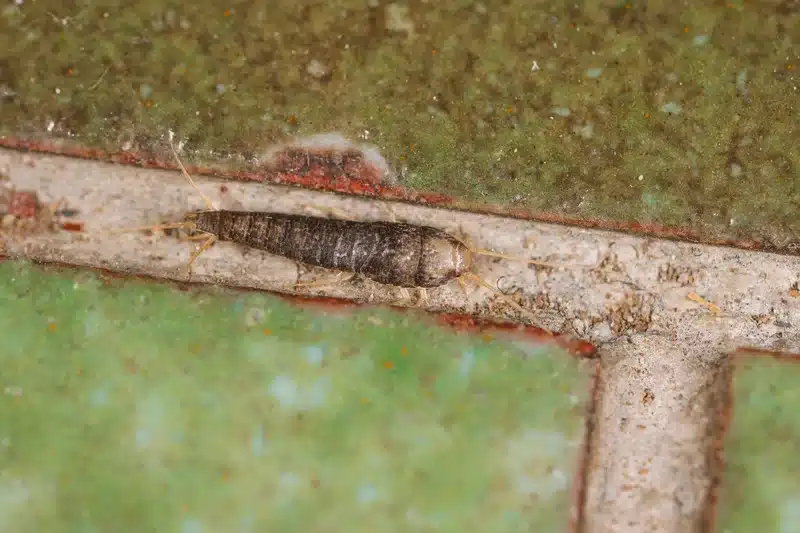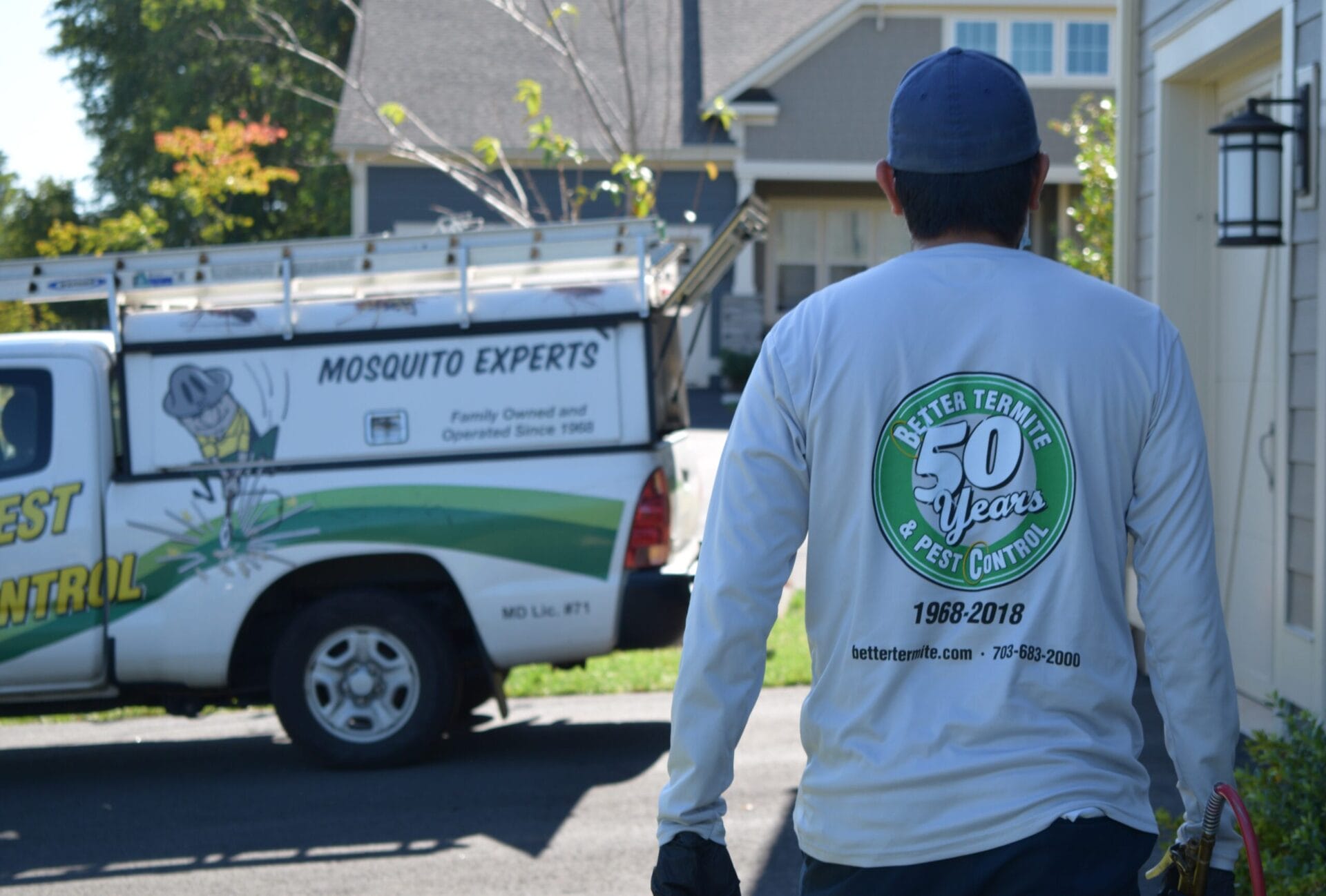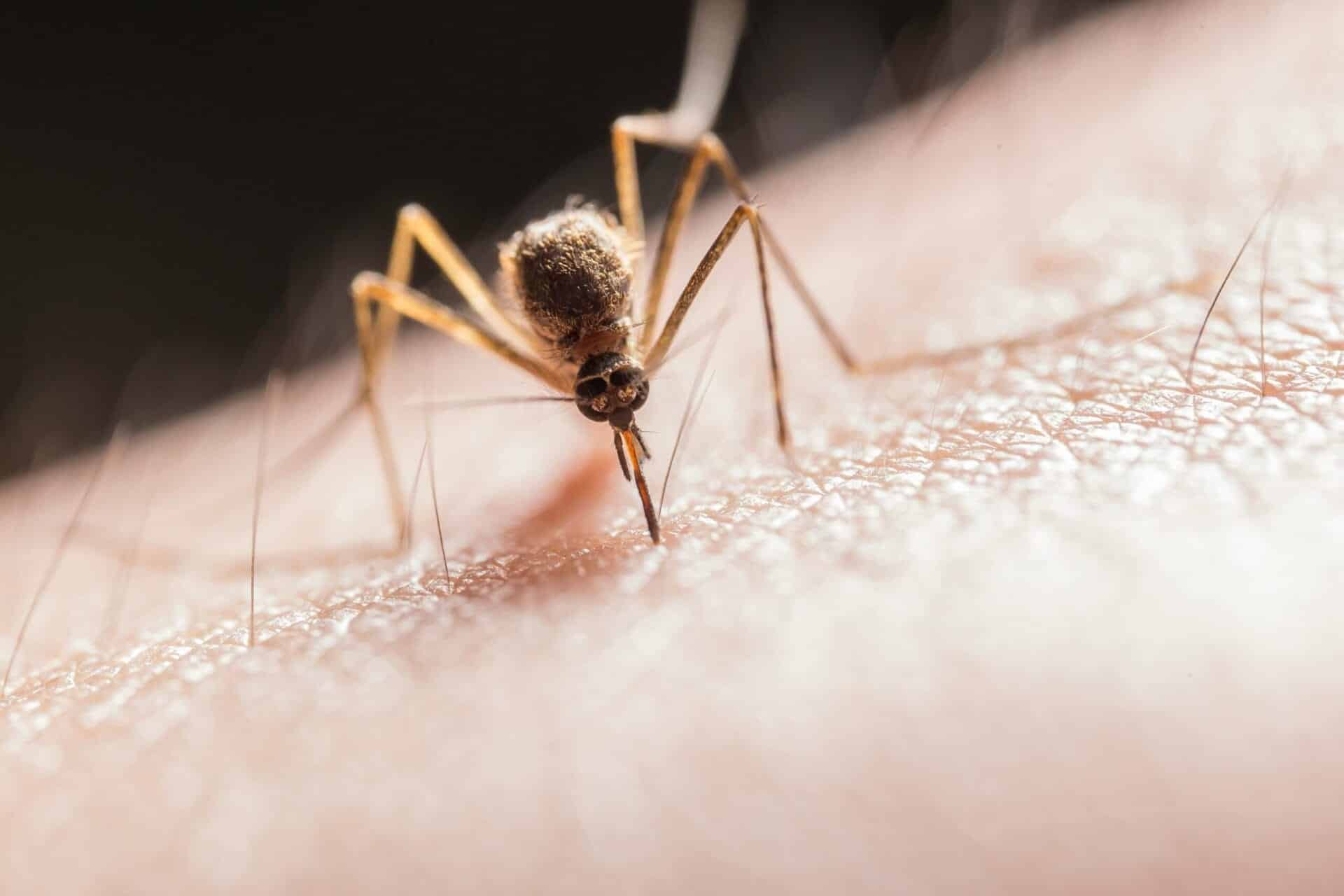


When you spot a small, crawling insect in your home, it can be tough to tell whether you’re dealing with an earwig or a silverfish. Both pests prefer moisture and often appear in similar areas, but they’re actually quite different creatures with distinct behaviors and treatment needs.
After four years as a registered technician and growing up in this family business that’s served the DMV area for over 50 years, I’ve seen countless cases of both earwig and silverfish problems. Understanding the key differences between these pests helps homeowners identify what they’re dealing with and choose the right control approach.
Quick Navigation

The easiest way to distinguish between earwigs and silverfish is by looking at their physical characteristics. Earwigs have prominent pincers at the end of their bodies, while silverfish have three tail-like appendages.
Earwigs typically measure 15-25 mm in length and display dark brown to mahogany-colored, flattened bodies with distinctive pincer-like cerci that males use for defense and courtship.
According to Virginia Tech Extension research, some Virginia earwig specimens can reach up to 32 mm in length, making them significantly larger than the typical range. This size variation is important for accurate identification, as larger specimens might initially be mistaken for other insects.
Silverfish are generally smaller, measuring 10-13 mm in length, though they can occasionally reach 18 mm. Their most striking feature is their silvery-gray coloration and distinctive fish-like shape that tapers toward the tail.
🔍 Quick ID Tip: The easiest way to tell these pests apart is to look at the rear end – earwigs have obvious pincers that look like forceps, while silverfish have three delicate, thread-like tails. This single feature is the most reliable identifier for homeowners.


When it comes to how these pests move around your home, the differences between earwig vs silverfish become quite obvious. Earwigs crawl rapidly in short bursts and can occasionally unfold their wings when startled, though they’re weak fliers.
Silverfish move with a distinctive wiggling motion that resembles a fish swimming through water. They’re excellent at running through tight cracks and can scale vertical surfaces using their claws and adhesive pads.
Both insects are primarily nocturnal, meaning they’re most active at night. During the day, they hide in humid refuges like mulch piles, book spines, or pipe chases. However, their hiding spots often differ based on their preferred habitats.
Understanding where you typically find these pests helps with both identification and control. Earwigs prefer outdoor locations with moist organic debris. They concentrate in mulch, leaf litter, under stepping stones, and around downspouts.

In contrast, silverfish prefer indoor environments with high humidity. They thrive in relative humidity levels of 75-95% and are commonly found in basements, bathrooms, libraries, and storage areas.
During extreme weather conditions like droughts or heavy rains, earwigs may migrate indoors temporarily. Silverfish, on the other hand, are persistent indoor residents that require consistent moisture to survive.

The feeding behaviors of earwigs vs silverfish reveal another key difference between these moisture-loving pests. Earwigs are omnivores that eat both plant and animal matter, including aphids, seedlings, decaying organic material, and soft fruits.
Interestingly, earwigs can actually be beneficial in gardens because they prey on aphids, mites, and other soft-bodied pests. This dual role as both predator and plant feeder means they’re not always purely harmful.
Silverfish specialize in eating materials containing starch, protein, glue, paper, and fabrics. These pests have remarkable survival abilities in the right conditions.
Research from the University of California IPM program shows that silverfish can survive 9-12 months without food if humidity levels remain adequate (above 75%). This exceptional survival ability explains why infestations can persist even when food sources seem limited, and why moisture control is more critical than food elimination for silverfish management.
The reproductive patterns of these insects show fascinating differences. Earwigs are seasonal breeders, typically mating between September and January in the Mid-Atlantic region. Female earwigs lay 30-55 eggs per clutch in soil chambers.
What makes earwigs unique among insects is their maternal care behavior. The female guards her eggs against fungi and predators, cleans them regularly, and tends to first-instar nymphs until they molt and disperse.
Silverfish reproduction involves an elaborate courtship dance lasting over 30 minutes. Females lay up to 60 eggs in batches, inserting them into crevices without providing any parental care. Their development is unusual because they continue molting throughout their lives, with some specimens recording over 17 molts.
When comparing the damage potential of earwig vs silverfish, there’s a clear difference in what homeowners can expect. Earwigs cause minimal structural damage to homes and are mainly a nuisance when they cluster indoors.
Outdoors, earwigs may chew irregular holes in seedling foliage, corn silk, or ornamental flowers. However, their beneficial role as predators often outweighs this minor plant damage.
Silverfish present more significant damage concerns for homeowners. They scrape surfaces of paper, books, wallpaper paste, and linens, creating irregular holes and bald patches. They also contaminate dry foods and leave behind pepper-like feces and iridescent scales.
One persistent myth about earwigs claims they burrow into human ears and brains. This folklore dates back to medieval Europe, but scientific evidence shows this fear is completely unfounded.
Virginia Tech Extension confirms there are no documented cases of earwigs actually entering ears to lay eggs or cause harm. The scientific name “Dermaptera” (skin wing) and common name “earwig” stem from medieval folklore, not from any actual behavior. Earwigs prefer moist, dark spaces like mulch and leaf litter – not human ears.
The confusion likely stems from their scientific name and the appearance of their pincers. While the pincers look intimidating, they’re primarily used for courtship, defense, and helping fold their wings.
Successfully managing these pests requires different approaches based on their unique behaviors and preferences. Earwig control focuses primarily on outdoor habitat modification and targeted trapping.
For earwigs, start by removing attractive outdoor habitats. Rake and thin mulch to less than 5 cm depth, move lumber piles away from the foundation, and prune dense ground covers.
Effective earwig traps include tuna cans filled with oil placed level with soil, or rolled damp newspaper collected and dunked in soapy water each morning. These simple methods take advantage of their nighttime activity patterns.
Silverfish control emphasizes moisture reduction as the primary strategy. Repair plumbing leaks, insulate cold-water pipes, and run dehumidifiers to keep relative humidity below 50%.
Physical control methods include vacuuming bookcases regularly, rotating stored papers, and sealing cereals in airtight containers. Monitor for silverfish activity using sticky traps or glass jars with masking tape ramps.

Both earwigs and silverfish serve as moisture indicators in and around your home. Persistent sightings of either insect signal chronically damp conditions that need attention.
For earwigs, indoor presence usually indicates issues like heavy mulch against the foundation, clogged gutters, or ground-contact wood retaining excessive moisture. Silverfish populations point to relative humidity levels of 75% or higher in areas like unvented crawlspaces or poorly balanced HVAC systems.
Addressing these underlying moisture problems often solves pest issues more effectively than relying solely on pesticide treatments. This approach aligns with integrated pest management principles that focus on long-term prevention.
💧 Moisture Control Tip: Both earwigs and silverfish serve as natural warning signals for moisture problems. If you see persistent populations of either pest, check for leaks, improve drainage around your foundation, and reduce indoor humidity to below 50% using dehumidifiers or better ventilation.

While homeowner efforts can manage many earwig vs silverfish problems, persistent issues may require professional intervention. Our family business has treated thousands of homes for these moisture-loving pests over five decades.
Professional treatment typically involves a comprehensive moisture audit, targeted applications of reduced-risk products, and ongoing monitoring. We’ve removed 9 harsh chemicals from our treatment programs, choosing alternatives that work effectively while being more considerate of families and pets.
For earwigs, professional treatment often includes perimeter applications and habitat modification recommendations. Silverfish treatments focus heavily on moisture control combined with targeted applications of materials like diatomaceous earth or silica gel in wall voids.
Understanding the differences between earwig vs silverfish helps you make informed decisions about pest management in your home. Whether you choose DIY methods or professional treatment, addressing the moisture conditions that attract these pests remains the most important long-term strategy.
If you’re dealing with persistent earwig or silverfish problems in the DMV area, our experienced team can help identify the specific issues in your home and develop an effective treatment plan. Call us at 703-683-2000 or email info@bettertermite.com for a consultation.
Don’t let moisture-loving pests damage your home or stress your family. Get expert identification, moisture control solutions, and targeted treatment plans from our experienced team.
Look at the tail end – earwigs have prominent pincers while silverfish have three thread-like tails. Earwigs are dark brown and larger, while silverfish are silver-colored and fish-shaped. Earwigs move in quick crawling bursts, while silverfish have a distinctive wiggling motion.
No, this is a persistent myth with no documented cases. Earwigs don’t seek out ears or cause harm to humans. Their pincers are used for defense, courtship, and wing-folding, not for attacking people.
Silverfish cause more significant home damage because they eat paper, books, fabrics, and wallpaper paste. Earwigs mainly damage garden plants and are mostly just a nuisance when they get indoors. Silverfish can destroy important documents and contaminate stored items.
Both earwigs and silverfish are attracted to moisture. Bathrooms provide the high humidity these pests need to survive. Silverfish especially thrive in relative humidity above 75%, making bathrooms ideal habitats. Check for leaks and improve ventilation to reduce moisture.
While moisture control helps with both pests, specific treatment approaches differ. Earwig control focuses on outdoor habitat modification and trapping, while silverfish control emphasizes indoor humidity reduction and targeted applications in hiding spots like wall voids.
Earwigs typically live about one year, with some females surviving up to two years. Silverfish have much longer lifespans, living 2-8 years and continuing to molt throughout their entire lives, which is unusual among insects.
Earwigs overwinter by burrowing deep into soil and become less active in cold weather. Silverfish remain active year-round indoors where temperatures stay warm and humidity levels are adequate. Indoor heating can actually create perfect conditions for silverfish during winter.
Large populations usually indicate significant moisture problems that need immediate attention. Start by identifying and fixing water leaks, improving drainage, and reducing humidity. For persistent infestations, contact a professional pest control service that can perform a comprehensive moisture audit and develop a targeted treatment plan.

With five years of hands-on experience in the pest control industry, George Schulz is a registered technician with the Virginia Pest Management Association and a proud third-generation professional in a family business that’s been protecting homes for over 57 years. He manages and trains a team of service pros while also leading internal research efforts—recently spearheading a deep-dive review of thousands of documents on pest control materials to hand-pick the most kid and pet friendly, most effective solutions tailored specifically for homes in the DC metro area. Read his bio.





